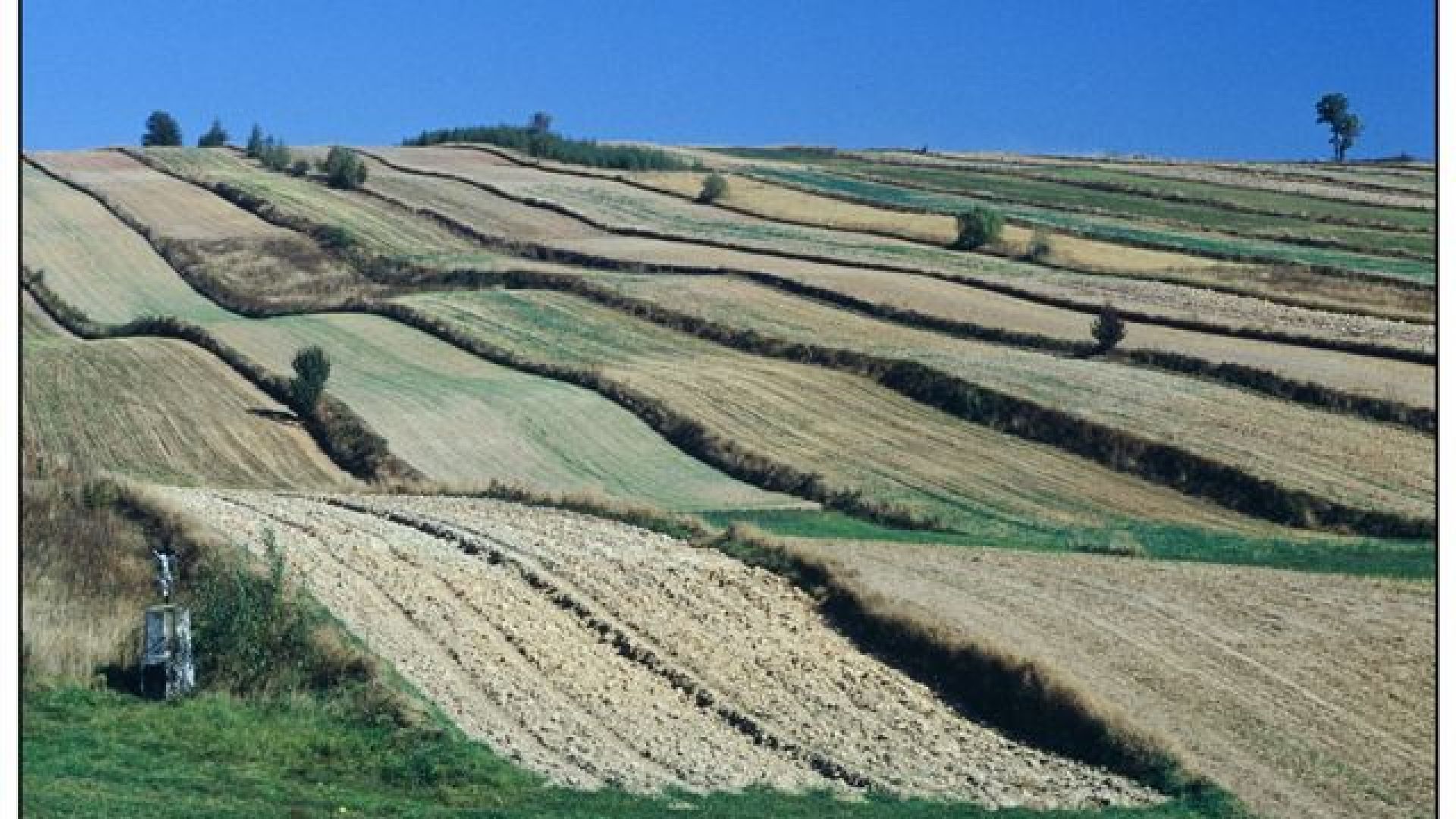The route, in addition to the magnificent views of Świętokrzyskie Mountains, gives possibility to admire the sights and history of Święta Katarzyna and Bodzentyn, as well as, appreciate natural values of Czarny Las Reserve.
Course: Święta Katarzyna – Góra Miejska – Bodzentyn – Psary Stara Wieś – Grabowa – Święta Katarzyna
Marking: section Święta Katarzyna – Bodzentyn – blue marking; section Bodzentyn – Psary Stara Wieś Green marking; section Psary Stara Wieś – Święta Katarzyna – without marking.
Time: about 5h (Time does not include sightseeing).
Lenght: 17 km

Święta Katarzyna - one should visit the Bernardine convent and Private Gallery of Minerals and Fossils – inevitable tourist point for lovers of geology, but also people sensitive to the beauty of inanimate nature. Tourists count on professional knowledge and information guides the museum. Through the village runs the Edmund Massalski red tail from Kuźniaki to Gołoszyce. On the trail, which leads to Łysica, the highest mountain Mountains, there is a brick chapel of the 18th century, where Stefan Żeromski signed his name. Beside the chapel graves insurgent of 1863 and partisan of Second World War are located. According to many legends, the spring of Saint Franciszek has medical properties.
Black Forest –this strict protection area was established in 1954. The area covers of 26.45 hectares. It is located in the western part of the Valley Dębniańska, representing an extension of the Wilkowska Valley. Includes elevation located at the confluence of the river Czarna Woda and the Golden Slope stream, as well as part of the valley of Czarna Woda. It lies at an altitude of 285-303 m above sea level. Dominant vegetation is fir, beech, maple, and many species that occur mainly in mountain forests (coral elderberry, livestock verruculosa).
Bodzentyn - The little town of Bodzentyn came into being through the urban settlement translocation from the nearby Tarczek by the Cracovian (Kraków) bishop Jan Bodzanta between 1348 and 1355. The local castle was converted into a palatial residence in the late-16th century.
 photo M. Brach
photo M. Brach The origins of the castle in Bodzentyn date back to the 14th century, when the Cracovian bishop Jan Bodzanta had a wooden manor built upon River Psarka. This was replaced by a brick castle with moat commissioned by another Cracovian bishop Florian of Mokrsko, and was connected to the town fortifications. Worth to see is an example of specific architecture prevailing in little rural towns is a well-preserved farm of the Czernikiewicz family in 3 Maja Street. The other monument is the Gothic Collegiate Church of St Stanislaus the Bishop was erected in the years 1440-152, founded by cardinal Zbigniew Oleśnicki. Its nave features late-Renaissance vaults, while the older cross-ribbed vaults are still decorating its sacristy and treasury room. In the presbytery stands a Renaissance alter piece made in 1546, and originally designated for the Wawel Cathedral. Rich decorations of the church interior include Renaissance tombstones, a splendid early-Renaissance painting on wood known as the Bodzentyn Triptych (1508), a Gothic sculpture of Madonna with Child (ca. 1430), and a late-Gothic baptismal font.
